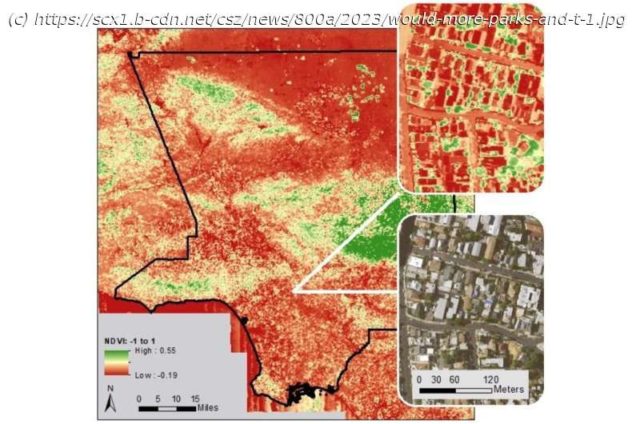Improving tree coverage and access to parks and green spaces in Los Angeles County, particularly in lower-income communities of color, could significantly boost life expectancy for local residents, according to a new study by UCLA public health researchers and colleagues.
Improving tree coverage and access to parks and green spaces in Los Angeles County, particularly in lower-income communities of color, could significantly boost life expectancy for local residents, according to a new study by UCLA public health researchers and colleagues.
Their study, published in the open-access journal Environment International, is the first in the U.S to combine life expectancy data at the census tract level with data on parks, trees and overall neighborhood vegetation.
Prior research has suggested that parks and greenery have mental and physical health benefits for residents of urban areas, providing clean air to breathe, shade during hot weather, and open and secluded areas for recreation and mental relaxation.
The current findings extend those potential benefits and, the study authors say, provide policymakers with a blueprint for targeted green strategies that could increase longevity among predominantly Black and Latino residents of «park poor» neighborhoods and help reduce health disparities in the region.
«If policies are implemented where they are needed most, there could be a significant decrease in life expectancy disparities across Los Angeles,» said Michael Jerrett, professor of environmental health sciences at the UCLA Fielding School of Public Health and corresponding author of the study.






